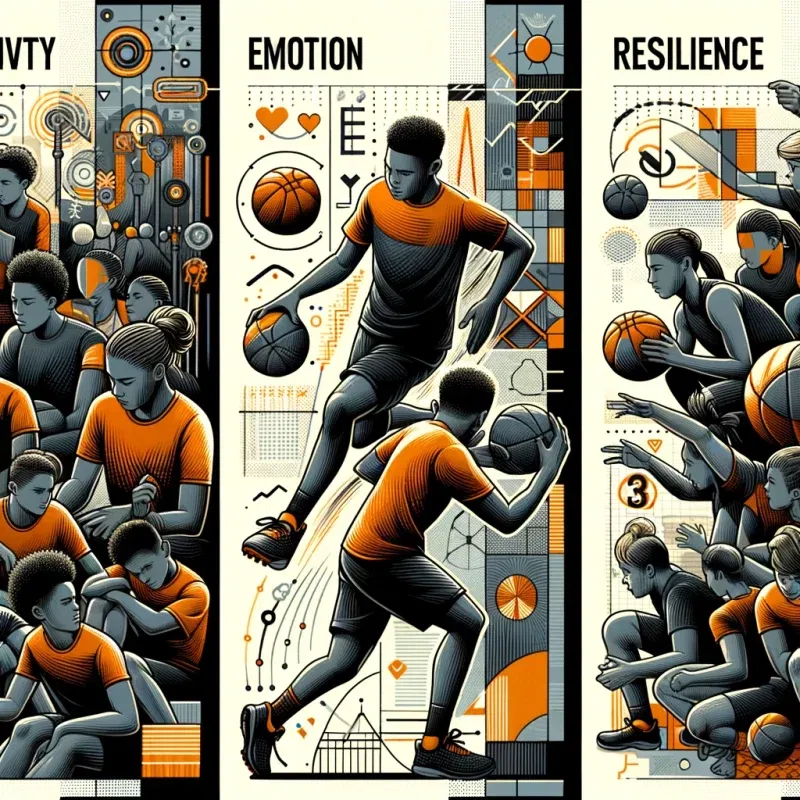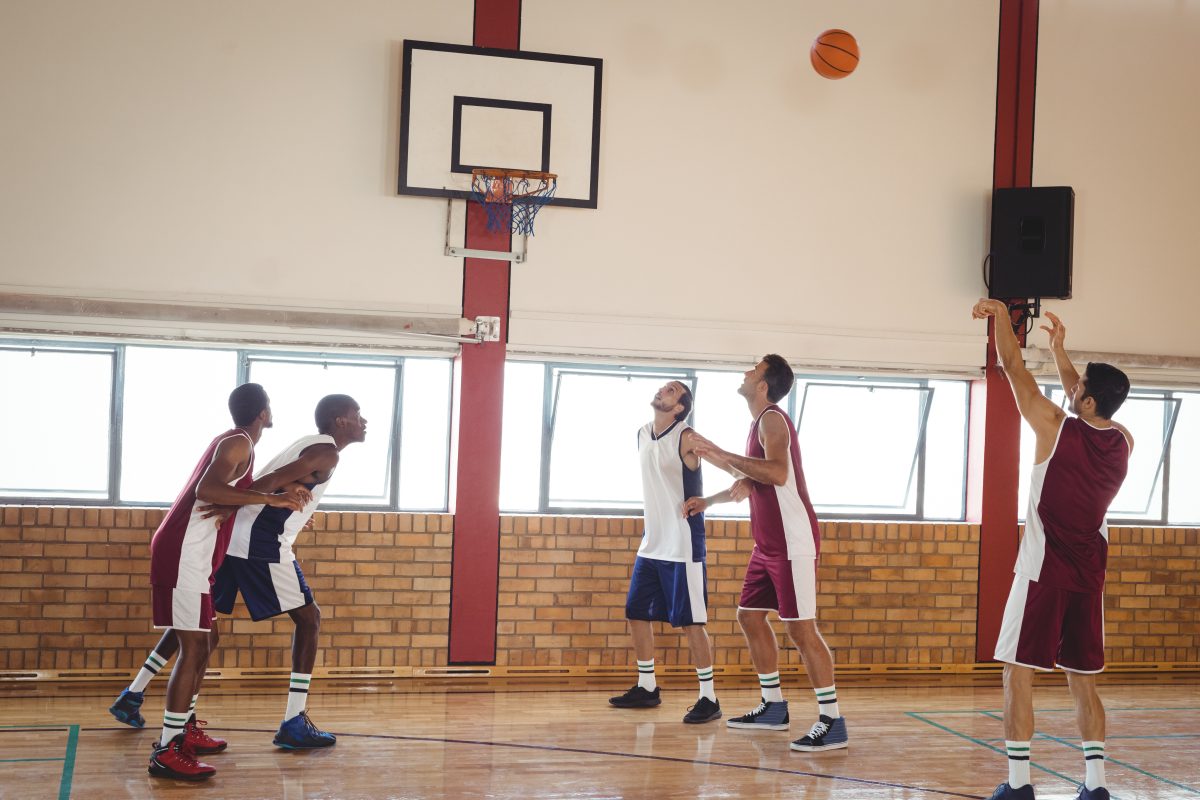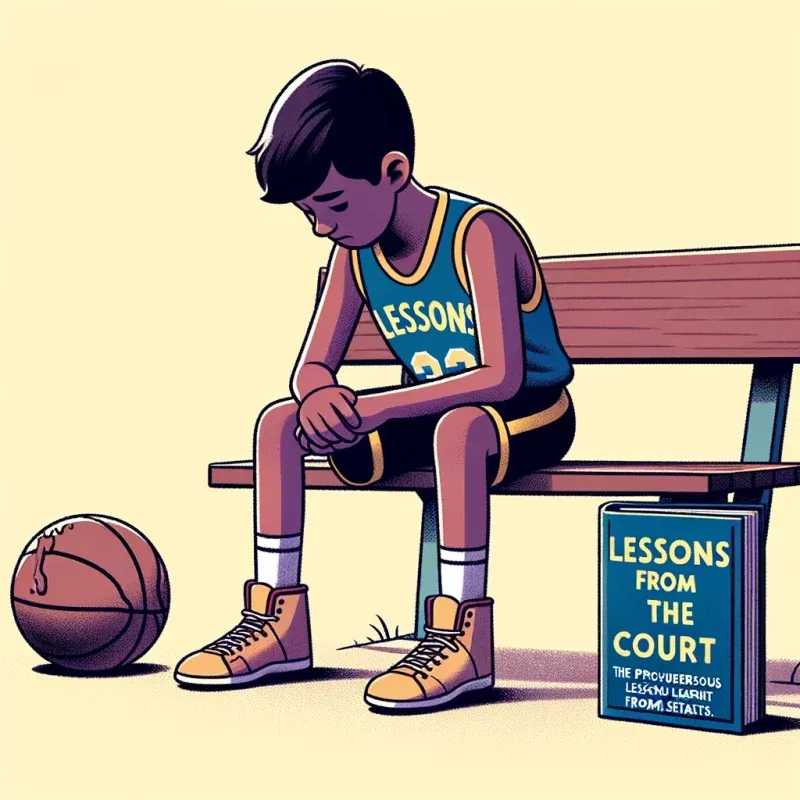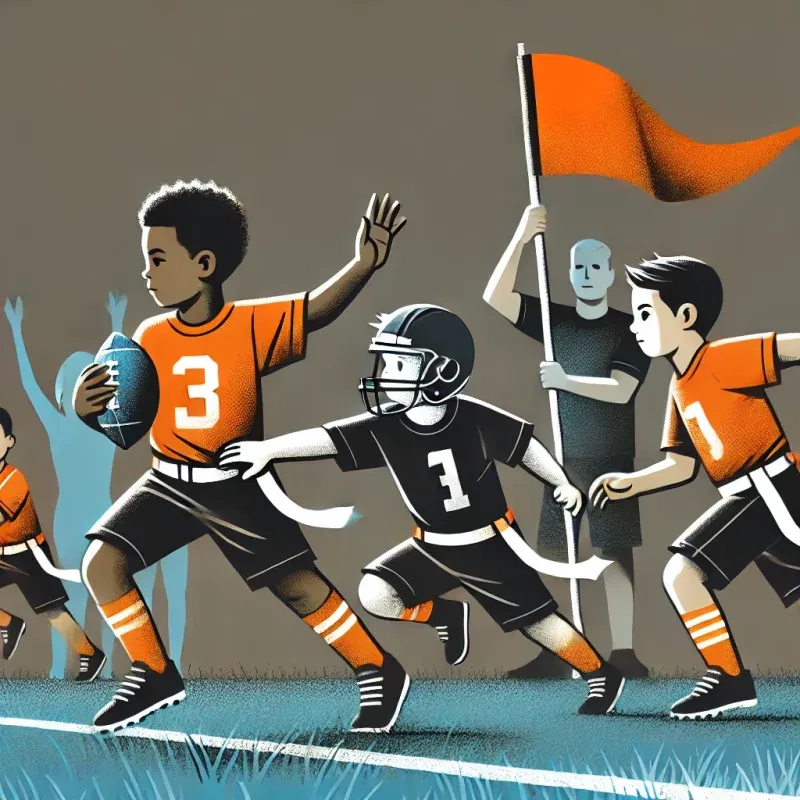Your cart is currently empty!
Category: Sports

Let Kids Play: The Importance of Fun Over Winning in Youth Sports
In the world of youth sports, there’s often a significant focus on winning. However, it’s crucial to remember that for young athletes, the primary objective should be having fun and enjoying the game. This approach not only enhances their experience but also fosters long-term benefits. Here are several reasons why letting kids play and have fun is more important than prioritizing winning.
1. Building a Love for the Game
When kids are encouraged to enjoy sports, they develop a genuine love for the game. This passion can lead to lifelong participation, whether competitively or recreationally. On the other hand, a win-at-all-costs mentality can create pressure and burnout, causing children to lose interest.
2. Developing Skills and Creativity
Focusing on fun allows kids to experiment and try new things without the fear of making mistakes. This creative freedom is essential for developing fundamental skills. When the pressure to win is removed, children are more likely to take risks and learn from them, leading to better overall development.
3. Promoting Physical and Mental Health
Playing sports for fun encourages physical activity, which is vital for a child’s health. It also helps in reducing stress and anxiety. The emphasis on enjoyment over winning can make sports a positive outlet for children, promoting mental well-being and a healthy lifestyle.
4. Teaching Life Lessons
Youth sports are an excellent platform for teaching valuable life lessons such as teamwork, leadership, and perseverance. These lessons are often better absorbed in a fun, relaxed environment. When the focus is solely on winning, these opportunities for personal growth can be overshadowed by the competitive nature of the game.
5. Encouraging Social Interaction
Sports provide a unique opportunity for kids to interact and build friendships. The social aspect of playing together and having fun is crucial for developing social skills. A focus on enjoyment fosters camaraderie and team spirit, which are important aspects of any sport.
6. Reducing Pressure and Anxiety
The pressure to win can be overwhelming for young athletes, leading to anxiety and a negative sports experience. When the emphasis is on fun, children are less likely to feel the intense pressure that can come from coaches, parents, and even themselves. This relaxed approach can make sports more enjoyable and less stressful.
7. Enhancing Long-Term Participation
Children who enjoy playing sports are more likely to continue participating as they grow older. This long-term involvement in sports can lead to healthier lifestyles and a lifelong appreciation for physical activity. Conversely, those who are pushed too hard to win may quit sports altogether due to negative experiences.
Balancing Fun and Competition
While the importance of fun cannot be overstated, it’s also essential to recognize that competition has its place in youth sports. Healthy competition can teach children to set goals, work hard, and strive for improvement. The key is finding a balance where the primary focus remains on enjoyment, with competition serving as a secondary, yet motivating, factor.
Conclusion
In youth sports, the priority should always be on letting kids play and have fun. This approach not only makes sports enjoyable but also contributes to the holistic development of young athletes. By fostering a love for the game, promoting physical and mental health, and teaching valuable life lessons, we can ensure that children reap the full benefits of participating in sports. As parents, coaches, and communities, it’s our responsibility to create an environment where fun and learning take precedence over winning.
For more insights into the benefits of youth sports, check out Project Play and Changing the Game Project.

Personality Traits of a Youth Football Quarterback
- Leadership: A young quarterback needs to exhibit strong leadership skills. They should be able to motivate and guide their teammates, both on and off the field.
- Confidence: Confidence in their abilities and decisions is crucial. A quarterback must believe in their own skills and inspire confidence in their teammates.
- Composure: The ability to stay calm under pressure is essential. They should be able to think clearly and make decisions quickly, even when the game is on the line.
- Work Ethic: A strong work ethic and dedication to improving their skills through practice and training are vital for a quarterback.
- Responsibility: Taking ownership of their actions, both good and bad, helps build trust with coaches and teammates.
Skills of a Youth Football Quarterback
- Throwing Accuracy: Precision in passing is a fundamental skill for a quarterback. They need to be able to hit their targets consistently.
- Arm Strength: A quarterback should have the ability to throw the ball with enough force to cover long distances when necessary.
- Footwork: Good footwork is essential for avoiding sacks, setting up passes, and executing plays.
- Decision-Making: The ability to read defenses, anticipate plays, and make quick, strategic decisions is crucial.
- Field Vision: A quarterback needs to see the entire field and understand the positioning of all players to make the best play choices.
Physical Attributes of a Youth Football Quarterback
- Height: While not essential, height can be an advantage as it helps with field vision and passing over defenders.
- Agility: Quickness and the ability to change direction rapidly are important for evading defenders.
- Strength: Both upper and lower body strength are important for throwing power and withstanding tackles.
- Stamina: A good level of cardiovascular fitness is needed to maintain performance throughout the game.
- Hand-Eye Coordination: Essential for accurate passing and catching snaps from the center.
Mental Attributes of a Youth Football Quarterback
- Football IQ: Understanding the rules, strategies, and tactics of the game is critical.
- Focus: The ability to concentrate on the game plan and remain focused despite distractions is important.
- Resilience: The mental toughness to recover from mistakes and setbacks during a game is crucial.
- Analytical Skills: The capacity to analyze the opposing team’s defense and adapt plays accordingly.
- Memory: Remembering plays, routes, and defensive setups is key for quick and effective decision-making.
What to Look for When a Young Player 8-14 Has Never Played the Game
- Interest and Enthusiasm: A genuine interest in the game and enthusiasm for playing are great indicators of potential.
- Athleticism: Basic athletic skills such as running, jumping, and coordination can be a good foundation.
- Coachability: The willingness to listen, learn, and apply coaching advice is essential for development.
- Team Spirit: An inclination to work well with others and support teammates is a positive sign.
- Curiosity: Asking questions about the game and showing a desire to understand it better indicates a keen learner.
- Natural Leadership: Even off the field, kids who naturally take charge or help organize activities may have the leadership qualities needed for a quarterback.
- Problem-Solving Skills: Kids who are good at solving puzzles or figuring out strategies in other areas may have the mental acuity for quarterbacking.
By observing these traits and skills, coaches and parents can help identify and nurture young players who have the potential to excel as quarterbacks in youth football.

The Tale of the Yellow Flag: Football’s Most Dramatic Prop
Once upon a time, in the vibrant world of American football, the field was alive with the shouts, grunts, and cheers of players and fans. But there was one small, unassuming hero who played a pivotal role in every game—a hero often misunderstood, yet vital to the sport’s drama and fairness. This hero was none other than the yellow penalty flag.
The Birth of the Yellow Flag
The story of the yellow flag dates back to the 1940s. Before its invention, officials used horns and whistles to signal penalties, often resulting in confusion and missed calls. Enter Dwight “Dike” Beede, a coach and innovator from Youngstown State University. Inspired by the need for clarity, he crafted the first yellow flag from a piece of his wife’s silk dress and some weights. This bright, eye-catching color was chosen to stand out against the green turf and the chaos of the game, ensuring everyone could see when a rule was broken.
The Emotional Rollercoaster
Fast forward to today, and the yellow flag is a well-known symbol of discipline and drama on the field. Imagine a nail-biting, intense game with only seconds left on the clock. The score is tied, and the tension is palpable. Suddenly, a yellow flag soars through the air, spinning like a dramatic exclamation point before landing on the turf. The reactions are instantaneous and intense.
On one side, the player who committed the foul experiences a range of emotions. Initially, there is denial—”No way, that wasn’t me!”—followed by a desperate plea for mercy as they approach the referee with wide eyes and hopeful words. “Come on, ref, it was just a little nudge!” Shame soon follows, a heavy feeling that weighs down their shoulders as they walk back to their position, avoiding the disappointed gazes of their teammates and coaches.
In stark contrast, the opposing team erupts with joy and gloating. “Yeah, that’s right! Take that!” they shout, high-fiving and celebrating their newfound advantage. Their fans join in, taunting the penalized player and cheering louder than ever. The crowd’s reaction is a symphony of boos and cheers, a cacophony that adds to the drama unfolding on the field.
The Psychology Behind the Yellow Flag
But why does this small piece of fabric evoke such strong reactions? The psychology of the yellow flag is fascinating. Yellow is a color that naturally draws attention; it is bright and hard to ignore, often associated with caution and alertness. In the context of football, it signals a break in the action, a pause that demands everyone’s focus.
When a referee throws the flag, it’s not just a signal of a rule broken but also a performance in itself. The way it arcs through the air, the way it lands with authority, it all adds to the spectacle. Players and fans alike are conditioned to respond to this ritualistic act with heightened emotions, their reactions amplified by the color’s association with warning and consequence.
The yellow flag, therefore, is more than just a tool for maintaining order. It is a key player in the psychological game of football, influencing the mindset and emotions of everyone involved. It can change the momentum of a game, shift the crowd’s energy, and alter the strategies of coaches and players.
Conclusion
So next time you watch a football game, keep an eye out for the yellow flag. Remember its humble beginnings and appreciate the crucial role it plays in the sport. It’s not just a piece of fabric—it’s a beacon of fairness, a symbol of the game’s integrity, and a catalyst for some of football’s most memorable moments. And as it flutters down onto the field, it carries with it the weight of history, emotion, and the ever-present drama of the game we all love.
For more intriguing stories and insights into the world of youth sports, visit The Sports Whistle.
References
- “The History of the Yellow Flag,” Football Americana, accessed May 19, 2024.
- “The Psychology of Color in Sports,” Sports Psychology Today, accessed May 19, 2024.
- “Dike Beede: The Innovator Behind the Yellow Flag,” Youngstown State University Archives, accessed May 19, 2024.

The Fun Side of Youth Sports: More Than Just Games
In the vibrant world of youth sports, from the soccer fields to basketball courts, each sprint, dribble, and swing is more than just physical activity; it’s a building block for a healthier, happier community. While the obvious perks—like physical fitness—are well known, the impact of youth sports extends far beyond, benefiting kids, families, and communities in wonderfully unexpected ways.
A Boost for Mental Health
Firstly, let’s dive into the mental health benefits. In today’s fast-paced world, even kids aren’t immune to stress and anxiety. Participating in sports offers a natural antidote. A study by the Aspen Institute found that kids who play sports report lower levels of depression, anxiety, and related symptoms. This could be because physical activity boosts mood-enhancing chemicals like endorphins and serotonin.
Strengthening Family Bonds
Youth sports also serve as a unique bridge between children and their families. It’s not just about dropping your kids off for practice; it’s about engagement. Families who participate together, whether by attending games or practicing in the backyard, share quality time that strengthens bonds. A survey conducted by the National Alliance for Youth Sports revealed that over 70% of parents noticed an improvement in family interaction when they actively participated in their children’s sports schedules.
Creating Community Cohesion
On a larger scale, youth sports are a catalyst for community solidarity. They transform local parks and school gyards into hubs of activity that bring people together, fostering a sense of belonging and collective pride. Economically, youth sports can be a boon too, often stimulating local businesses—from sports gear shops to local cafes where teams celebrate post-game.
Academic and Social Perks
The benefits spill over into academics and social development. Engaging in sports teaches discipline, dedication, and time management—skills that directly translate to better performance in school. According to a report by the United Nations, children who participate in sports have up to 40% higher test scores than their non-sporting peers.
Socially, sports are an incredible tool for teaching essential life skills like teamwork, leadership, and perseverance. Kids learn to interact with a diverse group of peers, handle both victory and defeat gracefully, and develop a sense of respect for others.
Long-term Impact
The long-term impacts of youth sports are equally impressive. The habits formed and lessons learned on the field often lead to a lifetime of fitness and active living. Moreover, a study by the Women’s Sports Foundation found that girls who play sports are 92% less likely to get involved with drugs, 80% less likely to get pregnant, and more likely to graduate from high school compared to non-athletes.
A Word on Mental Wellness
Special emphasis should be placed on the mental wellness that sports can foster. With regular participation, sports can help manage stress, enhance self-esteem, and provide a sense of control and competence that combats psychological distress. This is particularly crucial in adolescence, a critical period for mental health development.
In Conclusion
Youth sports offer a delightful mix of fun and functional benefits that ripple through all aspects of life. They’re not just games; they are a foundation for lifelong health, happiness, and community vitality. Encouraging kids to participate in sports is an investment in their future—and in the future of the community.
To explore more about the impact of youth sports and how you can get involved, check out the resources available at the National Alliance for Youth Sports website and the Aspen Institute’s Project Play.
This fun exploration of the wide-ranging benefits of youth sports highlights how play can shape healthier individuals, forge stronger families, and create more cohesive communities. To see the impact in colorful action, check out our vibrant graphic illustrating the joy and unity of youth sports in our signature colors of orange, black, and grey.
For parents, coaches, and community leaders, promoting participation in sports is not just about developing athletic skills but nurturing well-rounded young citizens equipped to face the world with confidence and camaraderie.

The Unsung Heroes of the Gridiron: The Critical Role of Offensive Linemen in Youth Football
In the heart-pounding world of youth football, where quarterbacks and running backs often steal the spotlight, a crucial group of players performs in the shadows. These are the offensive linemen—the unsung heroes whose performance in the trenches dictates the success of every play. Known as the battlefront of football, the offensive line is where the essence of the game truly resides.
The Trenches: Center of Action
The term “trenches” traditionally refers to the front lines of battle, and in football, it’s no different. The offensive line is the frontline where significant battles are fought every play. It’s here, in these confrontations, that games are shaped, as linemen clash with their defensive counterparts to open gaps and create opportunities for explosive plays. The effectiveness of the offensive line determines whether a play gains yards or loses them, making their role indispensable.
Sophistication in the Shadows
While often perceived as the place for the “less agile” or bigger players, the offensive line requires a unique blend of skills that combine strength, agility, intelligence, and precise execution. Each lineman has specific assignments that must be executed flawlessly to ensure the success of a play. A single mistake, such as jumping offsides or incorrectly positioning oneself, can not only disrupt a play but can also lead to significant losses for the team. These errors reveal strategies prematurely, like leaning back too far in a stance indicating a pass play, which can be critically exploited by the opposition.
Strategic and Physical Mastery
Offensive linemen must master various blocking techniques that demand both physical prowess and strategic foresight. Moves like the “pull” or the “pancake” require quick feet and strong hands, and each lineman’s ability to read the defensive setup and adjust their blocking strategy on the fly is crucial. This blend of mental and physical agility highlights the sophisticated nature of what might look like mere brute force to the casual observer.
Psychological Resilience and Team Dependence
Being an offensive lineman also requires psychological resilience. Rarely highlighted in highlight reels and often noticed only during fouls, these players must derive their sense of achievement from team success rather than personal glory. The offensive line is a testament to teamwork; every member depends on the others to perform their role with precision. The camaraderie developed in this unit is profound, as they share the burden and triumphs quietly.
The Heart of Football
The line is not just part of the game; it is where the heart of football beats the strongest. Every rush, every successful pass, and every game-winning touchdown trace back to the effectiveness of these linemen. By controlling the line of scrimmage, they control the game, making them more than just support players—they are central to every strategy and every outcome.
Conclusion
Understanding and appreciating the critical role of offensive linemen can enhance the experience of watching and playing youth football. These players embody the core of the sport—strategy, teamwork, and resilience. Highlighting their contributions can not only inspire a greater appreciation for the linemen but also encourage more young athletes to embrace these pivotal roles. The trenches may be tough, but they are where football’s most crucial battles are won.
Learn More
Explore more about the dynamics and crucial strategies of the offensive line here. This resource is ideal for coaches, players, and fans who want to deepen their understanding of the game’s foundational elements.

Fueling the Fire: Motivation and Inspiration in Youth Sports Coaching
In youth sports, the development of a young athlete is not solely about winning games but fostering an environment that supports both personal growth and athletic development. Recognizing individual differences among athletes is key to maximizing their potential while ensuring they remain motivated and enjoy their sports experience. This detailed exploration looks into the necessity of adapting coaching techniques to fit the varied needs of young athletes and steering clear of a one-size-fits-all mentality.
Recognizing the Diversity of Responses to Coaching Techniques
Understanding Different Responses: Children come with unique personality traits, physical abilities, emotional sensitivities, and learning styles. These differences profoundly influence how they respond to coaching. Some athletes might excel under strict and rigorous coaching, enjoying the push and responding well to direct criticism or high expectations. In contrast, others might find such an environment stressful or discouraging, leading to reduced motivation or enjoyment.
Personality Differences: Coaches should be aware of introverted versus extroverted athletes, for instance. Introverts may prefer quiet, individual feedback and might feel embarrassed or anxious with public praise or criticism. Extroverts might thrive in a more dynamic environment that emphasizes group interaction and public recognition.
Adapting to Learning Styles: The method of instruction can significantly impact an athlete’s ability to learn and perform. Visual learners benefit from demonstrations and visual aids, auditory learners from discussions and verbal instructions, and kinesthetic learners from engaging in physical activity to learn through doing. Understanding and incorporating these learning styles into coaching can dramatically improve the effectiveness of the training.
Tailoring Approaches to Individual Needs
Importance of Personalized Coaching: By observing how each athlete responds to different styles of coaching, feedback, and instruction, coaches can customize their approach to meet each athlete’s unique needs. This tailored coaching is crucial in fostering a positive sports environment and promoting optimal performance.
Setting Individual Goals: Personalized goals are vital in motivating athletes. By setting achievable, personalized targets, coaches can provide a clear direction that aligns with each athlete’s developmental stage and personal aspirations. This strategy not only enhances motivation but also helps athletes track their progress and feel a sense of accomplishment.
Continuous Feedback and Adjustment: Regular check-ins and feedback sessions help ensure that the coaching methods remain effective and responsive to each athlete’s evolving needs. This ongoing process allows for necessary adjustments in coaching strategies, helping athletes overcome challenges and continue developing in their sport.
Moving Beyond a One-Size-Fits-All Mentality
Flexibility in Coaching: Embracing flexibility in coaching styles, practice schedules, and communication methods can make a significant difference. This adaptability is essential, especially when dealing with a diverse group of young athletes, as it allows coaches to meet varied emotional and physical needs effectively.
Role of Parents in Sports: Parents have a crucial role in supporting their children’s sports activities. They should encourage open communication about their child’s experiences and feelings related to sports. This support helps in adjusting the training to better suit the child’s needs, promoting a healthier and more enjoyable sports experience.
Preventing Burnout and Ensuring Enjoyment: By adapting training and expectations to the individual needs of young athletes, coaches and parents can help prevent burnout and ensure that sports remain a positive aspect of their lives. Recognizing the signs of mental and physical exhaustion is critical and should be addressed by adjusting the intensity and approach of coaching.
Conclusion
Recognizing and respecting individual differences in youth sports training is essential for developing well-rounded, resilient, and satisfied athletes. Adaptive coaching, personalized goals, and supportive parental involvement play significant roles in cultivating an environment that promotes healthy growth, satisfaction, and lifelong love for sports.

Confronting Fear in Youth Sports: Navigating the Emotion of Fear
Fear is a natural emotion, one that even the youngest athletes face whether they are learning a new sport or confronting the possibility of defeat or injury. For children ages 5 to 14, understanding and managing fear can be a critical component of their sports experience. It’s essential for parents, coaches, and mentors to help young athletes develop healthy approaches to deal with fear. Here’s how:
1. Understanding the Role of Fear
Fear exists as a survival instinct. It’s the body’s response to potential danger, prompting us to react to protect ourselves. In sports, fear can manifest when trying a new skill, facing a tough opponent, or worrying about an injury. It’s important to teach young athletes that feeling fear is normal and can be a sign to proceed with caution.
2. Creating a Supportive Environment
Coaches and parents play a pivotal role in helping young athletes face their fears. Encouragement should be at the forefront of any sports training. A supportive environment allows children to express their concerns and fears without judgment. It’s about fostering a team spirit and emphasizing that it’s okay to talk about and share their feelings.
3. Gradual Exposure
Introducing new skills gradually can help reduce anxiety. Coaches should break down skills into manageable parts and commend effort at every step, not just success. This method can reduce the overwhelming feeling that might come from trying to master a challenging task all at once.
4. Focus on Learning and Effort, Not Just Winning
Shifting the focus from winning to learning and effort can significantly alleviate the pressure that breeds fear. Young athletes should understand that making mistakes is a part of learning and that each error is a step towards improvement. Celebrating small victories and efforts can boost confidence and reduce fear.
5. Physical Preparation and Safety
Understanding the physical aspects of sports can help manage fear, especially the fear of injury. Proper training, using the right equipment, and ensuring safety in practice and games can reassure young athletes and their parents. Coaches should emphasize the importance of warm-ups, proper technique, and adherence to game rules to keep sports a safe environment.
6. Psychological Techniques
Teaching basic relaxation and visualization techniques can be incredibly beneficial. Before a game or a practice, encourage young athletes to engage in deep breathing exercises, visualize succeeding in their tasks, or use positive affirmations. These techniques can help mitigate feelings of fear and anxiety.
7. Encourage Resilience and Facing Fears
It’s crucial for young athletes to learn resilience—bouncing back from setbacks and continuing to try even when they are afraid. Coaches and parents can share stories of their own or famous athletes’ struggles and how they overcame them. Knowing that their heroes have faced and conquered similar fears can be immensely reassuring.
Conclusion
Fear in youth sports is inevitable, but it can be managed and transformed into a learning tool with the right approach. Coaches and parents need to work together to teach young athletes how to face their fears with courage and resilience, making sports a valuable part of personal growth.
For more insights on psychological strategies in youth sports, you might find useful resources and expert opinions here.

Mastering Motivation in Youth Sports: Creativity, Emotion, and Resilience – An Extensive Guide
Motivation in youth sports is not just about pushing young athletes to excel; it’s about understanding and tapping into the complex interplay of creativity, emotion, and resilience that fuels their passion and performance. This detailed guide provides an in-depth look at innovative motivational strategies, the critical role of emotional engagement, and the nuanced approach to dealing with failure and building resilience. Given the depth and breadth of the topics covered, we encourage readers to engage actively by sharing thoughts and experiences in the comments below, enhancing our collective understanding and approach.
Expanding the Role of Creativity in Athletic Motivation
Innovative Training Techniques: Creativity in training goes beyond traditional drills and exercises; it involves incorporating novel, engaging methods that stimulate both the body and mind. For example, using gamification in training can significantly increase motivation, transforming rigorous workouts into exciting challenges. Techniques such as virtual reality simulations can also provide a competitive edge by allowing athletes to experience high-pressure scenarios in a controlled environment, thus preparing them mentally and physically for actual competitions.
Artistic Cross-Training: Integrating arts into athletic training can open up new avenues for skill development. Activities such as ballet or martial arts can enhance an athlete’s agility, balance, and precision—traits that are beneficial across many sports. Similarly, music and rhythm training can improve an athlete’s timing and coordination. These creative crossovers not only break the monotony of regular training but also help in developing a well-rounded athlete who appreciates and utilizes diverse forms of expression and skill.
Leveraging Emotion to Enhance Performance
Emotional Intelligence in Sports: Developing emotional intelligence is crucial for athletes, enabling them to manage their emotions, understand the feelings of their teammates, and enhance interpersonal dynamics within the team. Training sessions that focus on emotional awareness and regulation can help athletes perform under pressure, maintain concentration during critical moments, and foster a positive team atmosphere.
Eliciting Positive Emotional Responses: The way coaches and parents react to performance and behavior significantly impacts an athlete’s emotional state. Positive reinforcement and constructive criticism can boost self-esteem and motivation, while negative feedback can lead to anxiety and withdrawal. Implementing a consistent approach that rewards effort, celebrates small successes, and provides supportive feedback can create a motivational environment driven by positive emotional experiences.
Understanding and Cultivating Resilience
Reframing Failure as Opportunity: One of the most effective ways to deal with failure is to reframe it as a learning opportunity. This perspective encourages young athletes to experiment, take calculated risks, and learn from their mistakes without fear of retribution or ridicule. Coaches and mentors play a pivotal role in this reframing process by highlighting the lessons in every failed attempt and by encouraging athletes to apply these lessons in future endeavors.
Building a Resilience Framework: A structured approach to building resilience might include setting up scenarios that gradually expose athletes to adversity. This method allows them to develop coping strategies and confidence in a step-by-step manner. Training should also include mental conditioning exercises, such as visualization and mindfulness, which strengthen the athlete’s ability to focus and recover from setbacks.
Encouraging Persistence and Grit: Cultivating a culture that values persistence and grit is essential for developing resilience. Athletes should be encouraged to set long-term goals and commit to achieving them despite obstacles. Recognizing and celebrating perseverance as much as achievement can motivate athletes to keep pushing their limits.
Engage, Discuss, and Grow Together
This comprehensive exploration of motivation in youth sports aims to ignite a broader conversation about effective strategies to inspire and support young athletes. We invite you to share your insights, experiences, and challenges in the comments section. Whether you’re a coach, a parent, or a former athlete, your stories and advice can help others in the community and enrich our collective understanding.
Please consider contributing to this discussion by sharing how you have applied creative training methods, managed emotional dynamics, or developed resilience in the face of adversity. Your participation is invaluable as we aim to foster a supportive community that embraces diverse approaches to motivating young athletes.
To further enrich your approach, explore additional resources and training materials available through sports psychology platforms and professional coaching organizations.

Weight Training for Young Athletes: A Balanced Approach
As a content author focusing on youth sports, the topic of weight training for young athletes is both relevant and important. When should young athletes start lifting weights? How does it impact their growth and development? Understanding the differences between aerobic and anaerobic exercises, and the repercussions of starting weight training too early, is crucial.
Aerobic vs. Anaerobic Exercise: What’s the Difference?
Aerobic exercises, like running, swimming, or cycling, are activities that use oxygen to meet energy demands during exercise. They’re great for improving cardiovascular health and enhancing endurance. On the other hand, anaerobic exercises, such as weight lifting or sprinting, are performed in short, intense bursts. These exercises are key for building strength and muscle mass.
Benefits of Aerobic and Anaerobic Exercises
Both types of exercises offer unique benefits. Aerobic exercises improve heart and lung function, increase stamina, and can help reduce the risk of chronic diseases. Anaerobic exercises, like weight lifting, are essential for building and strengthening muscles, improving bone density, and boosting metabolic rate.
When is it Too Early for Weight Training?
There’s a growing concern about young athletes starting weight training too early. The main risks include potential injuries, overtraining, and the possibility of affecting growth and development. It’s vital to understand that a child’s muscles, joints, and bones are still developing, and excessive strain can lead to long-term issues.
Understanding Muscle and Joint Development in Young Athletes
The development of muscles and joints in young athletes is a complex process. Muscles grow and develop differently in pre-adolescents due to hormonal differences. Similarly, their joints and ligaments are still maturing, making them more susceptible to injuries if subjected to heavy lifting or improper training techniques.
Making the Right Choice
So, when is the right time to start? Generally, introducing weight training around ages 7 to 8 is considered safe, provided the focus is on proper technique and light weights. It’s essential to have supervision by knowledgeable coaches and prioritize technique over the amount of weight. A holistic approach, including a mix of aerobic and anaerobic exercises, is crucial for the overall development of young athletes.
Conclusion
In conclusion, integrating weight training into the routine of young athletes can be beneficial, but it needs to be done cautiously and under proper guidance. Balancing aerobic and anaerobic exercises, focusing on safety, and understanding the physical development of young athletes will ensure they reap the benefits without the risks.
For more insights on youth sports, visit “The Sports Whistle” blog. Stay informed and up-to-date on the latest trends and tips in youth sports.
References:

The Evolution and Importance of the Free Throw in Basketball
The free throw in basketball is often referred to as the “charity stripe,” but there’s nothing charitable about it. This simple shot, taken 15 feet away from the basket, holds a rich history and significance in the game. In this article, we’ll dive deep into the origins of the free throw, its evolution in technique, and the immense psychological weight it carries during crucial game moments.
Why Does the Free Throw Exist?
The free throw was introduced to penalize fouls and give the fouled player an opportunity to score. It’s a fundamental concept: if a player is hindered from making a basket due to a foul, they are given free shots to compensate. This not only maintains fairness but also adds an additional layer of strategy to the game. Teams must weigh the risk of fouling against the potential points the opponent could score from the free throw line.
The Evolution of the Free Throw Technique
- Early Days (1890s-1920s): In the nascent stages of basketball, players used a two-handed set shot for free throws. They would stand still, holding the ball with both hands and pushing it towards the basket.
- One-Handed Era (1930s-1960s): As players sought more accuracy and consistency, many shifted to a one-handed shooting style. This allowed for better focus and alignment with the basket.
- The Rise of the Jump Shot (1970s-Present): With the jump shot’s increasing popularity in field play, players began to incorporate a slight jump in their free throw routine, giving them rhythm and fluidity.
While these are the broad strokes of free throw evolution, individual players have often had unique styles, like Rick Barry’s underhand “granny shot.”
The Mental Game
The pressure associated with free throws can’t be understated. Imagine standing alone with all eyes on you in a silent arena, knowing that the outcome of the game may hinge on your next shot. It’s a test of focus, nerves, and preparation.
Many legendary games have been decided by free throws. The ability to remain calm and execute in these high-pressure situations separates good players from great ones. Sports psychologists often work with players to develop routines and mental strategies to handle this pressure.
The Discipline to Master the Shot
Achieving consistency in free throws requires endless repetition and practice. Legendary player Larry Bird was known to practice hundreds of free throws daily. It’s about muscle memory, ensuring that every motion, from the bend of the knees to the flick of the wrist, is consistent and precise.
Conclusion
The free throw, while seemingly simple, is a microcosm of basketball’s beauty and complexity. It encapsulates the game’s history, the evolution of skill and technique, the psychological battles players face, and the sheer discipline required to excel.
For more insights on basketball techniques and history, check out our extensive archives.
References:

Embracing the Dance of Defeat: A Symphony of Lessons from the Field
The grand amphitheater of youth sports, with its vast expanse of green fields and echoing courts, serves as both a battleground and a classroom. Within its confines, dreams are spun from the threads of hope, ambition, and raw effort. Yet, as any seasoned player will attest, victory is but one side of the coin. The other, often more profound side, is defeat. And in that realm of setbacks and missed opportunities, there lies a treasure trove of lessons waiting to be uncovered.
Enter Eli, a young soccer enthusiast with aspirations as vast as the skies. With every game, he brought to the field not just skill, but a heart filled with passion. Yet, like the unpredictable flight of a sparrow, his kicks often took paths less intended. Sometimes they’d land in the goal, while other times they’d find solace in the embracing arms of a tree or the startled yelp of a spectator’s dog. But with every misdirected kick, there was an underlying tale, a narrative of genuine effort and dreams that refused to dim.
Now, sports, much like the tapestry of life, isn’t solely about the end score but the journey that leads to it. It’s reminiscent of a fisherman casting his line into an unpredictable sea. Some days the waves bring in a prize catch, while on others, one is left contemplating the profound mysteries of an old boot, symbolizing the unpredictable outcomes of effort.
Yet, here’s where the true essence of sportsmanship shines. In every stumble, in every tear shed on the dew-kissed turf, there’s a lesson waiting to be embraced. Here are some of those invaluable lessons:
- The Honorable Defeat: Sometimes, you face opponents who are simply better. They’ve honed their skills, put in the hours, and their game is top-notch. Losing to such a rival teaches respect and the importance of continuous self-improvement. As the legendary basketball coach John Wooden once said, “Never mistake activity for achievement.”
- The Stinging Betrayal: There are times when the scales of justice tilt, not because of skill, but deceit. When opponents resort to cheating, the loss feels unjust. Yet, it serves as a reminder of the importance of integrity, of playing the game with honor, even when others don’t.
- The Self-Inflicted Wound: Mental mistakes, lapses in judgment, a momentary lapse in focus – these are defeats we bring upon ourselves. They teach self-awareness, the importance of mental fortitude, and the need for mindfulness in every move.
- The Ill-Prepared Endeavor: Sometimes, the field’s conditions, be it rain, wind, or an unfamiliar turf, become the unanticipated adversary. Losing due to lack of preparedness for these conditions underscores the value of adaptability and the need for comprehensive training.
As the final whistle pierces the air, young champions, irrespective of the game’s outcome, come together in a display of camaraderie and sportsmanship. Their interactions, filled with handshakes, shared laughter, and mutual respect, weave a narrative that speaks volumes about humanity’s indomitable spirit.
In conclusion, while the world often celebrates victories, it’s the lessons from defeat, the virtues imbibed from setbacks, and the grace with which we rise that truly define our character. As Vince Lombardi, the iconic football coach, aptly put it, “It’s not whether you get knocked down; it’s whether you get up.”
